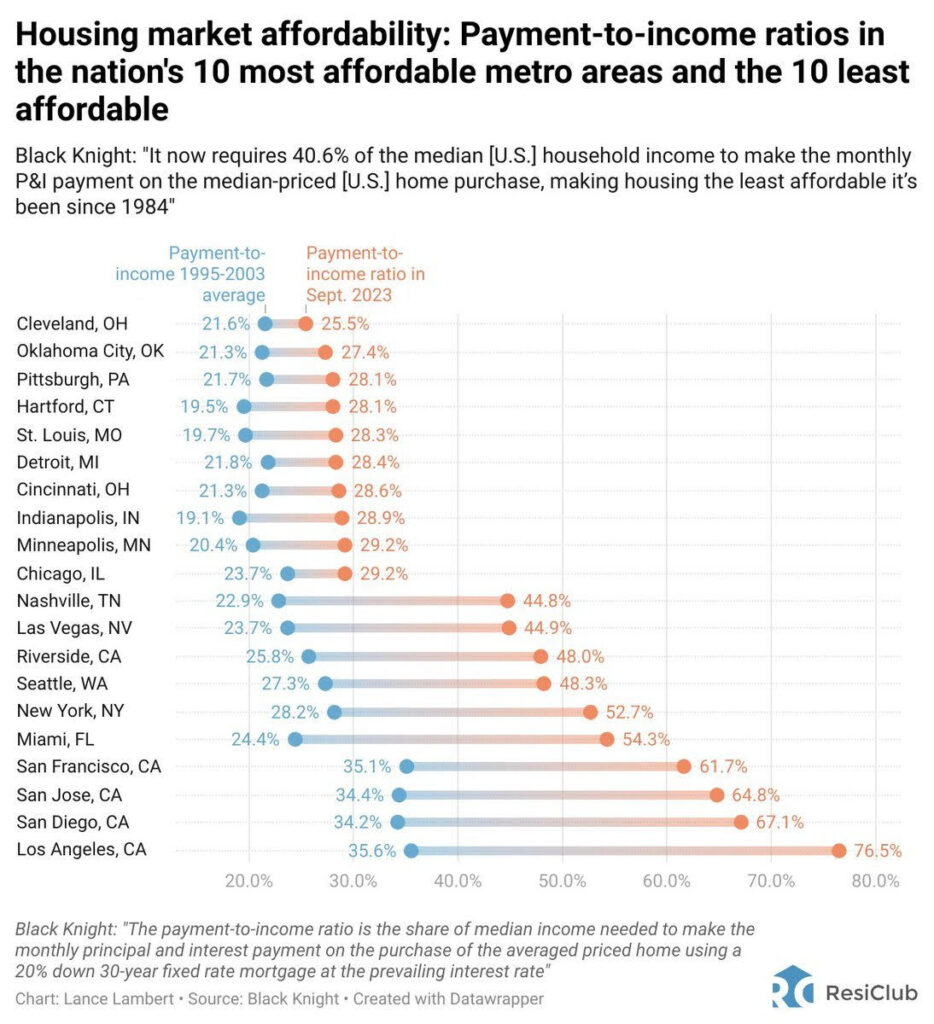From HousingWire:
What will lower mortgage rates do to spring housing inventory?
Lower mortgage rates tend to take housing supply off the market and demand has been picking up lately as rates have fallen. However, the recent drop in housing inventory has more to do with seasonality factors than lower mortgage rates.
Higher mortgage rates did push inventory higher during the seasonal period when it would normally be declining. However, seasonality tends to rule the day eventually. The question now is what will inventory look like in the spring if mortgage rates keep falling?
Now that mortgage rates have fallen from a bit over 8% toward 7.32%, we can see the immediate impact as purchase application data was positive for the third straight week. Last week, it was up 4%, making the year-to-date count 21 positive prints versus 23 negative prints and one flat week.
The rule of thumb is that it’s a material difference if we get 12-14 weeks of a positive trend. Last year, we had three months of a positive data run as rates fell from 7.37% to 5.99%. So for now, three weeks of positive purchase applications is a small but important step in the right direction.
The 10-year yield ended the week roughly flat. Mortgage rates started the week at 7.38% and ended at 7.32%; it was a light holiday trading week, so we shouldn’t make too much of it. Instead, let’s look at the future: If the 10-year yield can break under 4.34% with some kick from bond buyers, we have an excellent shot at getting under 7%.
…
As we head toward the end of the year and start the countdown to Christmas, it looks certain that I will not have even one week of the kind of inventory growth I was hoping for when mortgage rates got above 7.25%. I was looking for at least a few weeks of inventory growth between 11,000-17,000, and it has yet to happen — even when mortgage rates got to 8%.


